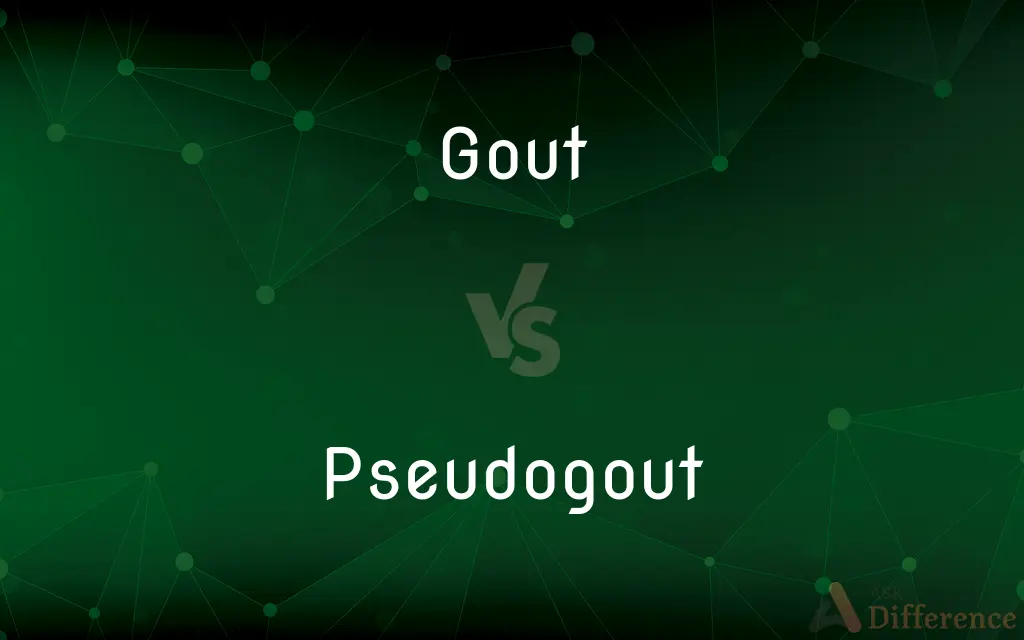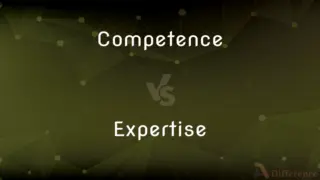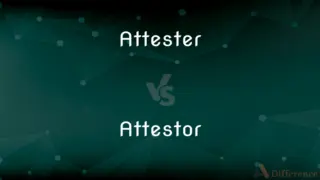Gout vs. Pseudogout — What's the Difference?
By Tayyaba Rehman — Updated on September 22, 2023
Gout results from uric acid crystals in joints, causing pain; Pseudogout arises from calcium pyrophosphate crystals with similar symptoms.

Difference Between Gout and Pseudogout
Table of Contents
ADVERTISEMENT
Key Differences
Gout and Pseudogout, while sounding similar, have different causes. Gout is a type of arthritis resulting from the deposition of uric acid crystals within joints. In contrast, Pseudogout is caused by the deposition of calcium pyrophosphate dihydrate (CPPD) crystals. Both conditions lead to painful joint inflammation.
The symptoms of Gout and Pseudogout can be similar, often causing confusion. Gout typically affects the big toe, but can influence other joints too. Pseudogout, on the other hand, often targets the knee, wrist, or other larger joints. Both conditions manifest with sudden, severe pain, redness, warmth, and swelling in the affected joint.
While Gout is primarily linked to elevated levels of uric acid in the blood, several factors contribute to its onset, including genetics, diet, and kidney function. Pseudogout, conversely, doesn't have as clear a link to specific triggers, though age, genetics, and mineral imbalances may play roles.
Treatment for Gout primarily focuses on managing pain and reducing uric acid levels, employing medications like NSAIDs, corticosteroids, and drugs that alter uric acid production or excretion. Pseudogout treatments also involve pain management with anti-inflammatory drugs, but there's no specific treatment to dissolve CPPD crystals or prevent their formation.
Lastly, while both conditions can cause joint damage over time, their management and prognoses can vary. Proper diagnosis is essential since Gout and Pseudogout require different approaches to treatment and prevention.
ADVERTISEMENT
Comparison Chart
Causative Crystal
Uric acid crystals
Calcium pyrophosphate dihydrate crystals
Commonly Affected Joints
Big toe, can affect other joints
Knees, wrists, and larger joints
Primary Causes
Elevated uric acid, genetics, diet, kidney function
Age, genetics, mineral imbalances
Treatment
NSAIDs, corticosteroids, uric acid-altering drugs
Anti-inflammatory drugs, no specific treatments for crystals
Symptoms Onset
Can be sudden and severe
Often sudden with severe pain
Compare with Definitions
Gout
Gout is a form of inflammatory arthritis characterized by recurrent attacks of a red, tender, hot, and swollen joint. Pain typically comes on rapidly, reaching maximal intensity in less than 12 hours.
Pseudogout
A type of arthritis caused by calcium pyrophosphate crystal deposition.
The severe knee pain was a symptom of Pseudogout.
Gout
A disturbance of uric-acid metabolism occurring chiefly in males, characterized by painful inflammation of the joints, especially of the feet and hands, and arthritic attacks resulting from elevated levels of uric acid in the blood and the deposition of urate crystals around the joints. The condition can become chronic and result in deformity.
Pseudogout
A medical disorder linked to age, genetics, and mineral imbalances.
As she aged, she became more susceptible to Pseudogout.
Gout
A large blob or clot
"and makes it bleed great gouts of blood" (Oscar Wilde).
Pseudogout
A joint condition resembling Gout but with different causative crystals.
Pseudogout and Gout can often be mistaken due to their similar symptoms.
Gout
An extremely painful inflammation of joints, especially of the big toe, caused by a metabolic defect resulting in the accumulation of uric acid in the blood and the deposition of urates around the joints.
Pseudogout
An inflammatory ailment targeting larger joints.
Her wrist inflammation was identified as Pseudogout.
Gout
A spurt or splotch.
Pseudogout
A condition resulting in sudden, painful joint flare-ups.
He was advised rest during his Pseudogout attack.
Gout
(rare) A disease of wheat and cornstalks, caused by insect larvae.
Pseudogout
(medicine) A medical condition with symptoms resembling gout but caused by precipitation of calcium pyrophosphate crystals in the joints instead of monosodium urate crystals.
Gout
(obsolete) taste; relish
Gout
(intransitive) To spurt.
Gout
A drop; a clot or coagulation.
On thy blade and dudgeon gouts of blood.
Gout
A constitutional disease, occurring by paroxysms. It consists in an inflammation of the fibrous and ligamentous parts of the joints, and almost always attacks first the great toe, next the smaller joints, after which it may attack the greater articulations. It is attended with various sympathetic phenomena, particularly in the digestive organs. It may also attack internal organs, as the stomach, the intestines, etc. It is an inherited disease of purine metaboism, which causes an increased level of uric acid in the blood, and leads to deposition of crystals of sodium urate in cartilage within joints and in connective tissue. It can be alleviated by a diet low in purines, and is treated by drugs which block formation of uric acid.
Gout
A disease of cornstalks. See Corn fly, under Corn.
Gout
Taste; relish.
Gout
A painful inflammation of the big toe and foot caused by defects in uric acid metabolism resulting in deposits of the acid and its salts in the blood and joints
Common Curiosities
What causes Gout?
Gout is caused by the buildup of uric acid crystals in the joints.
Which joints are commonly affected by Gout?
Gout commonly affects the big toe but can impact other joints as well.
What is a common joint affected by Pseudogout?
Pseudogout frequently affects the knees, wrists, and larger joints.
Can diet influence Gout?
Yes, a diet high in purines, like red meat, can raise uric acid levels, contributing to Gout.
How is Pseudogout different from Gout?
Pseudogout is caused by calcium pyrophosphate crystals, while Gout is due to uric acid crystals.
Is there a cure for Pseudogout?
No, there's no cure, but symptoms can be managed with anti-inflammatory drugs.
How is Gout treated?
Gout treatment includes NSAIDs, corticosteroids, and drugs that manage uric acid levels.
Can Gout lead to other health complications?
Yes, untreated Gout can cause joint damage and kidney stones.
Can Gout be prevented?
Gout flare-ups can be reduced or prevented with medication, diet, and lifestyle changes.
What triggers a Pseudogout flare-up?
Triggers can include trauma, surgery, or underlying health conditions.
How is Pseudogout diagnosed?
It's diagnosed through joint fluid analysis, X-rays, and other tests.
Are older individuals more at risk for Pseudogout?
Yes, Pseudogout risk increases with age.
Why is it called "Pseudogout"?
It's named so because it mimics Gout symptoms but has a different cause.
Are Gout and Pseudogout hereditary?
Both conditions can have a genetic component, increasing susceptibility.
Is Gout more common in men or women?
Gout is more common in men, but the risk for women increases after menopause.
Share Your Discovery

Previous Comparison
Competence vs. Expertise
Next Comparison
Attester vs. AttestorAuthor Spotlight
Written by
Tayyaba RehmanTayyaba Rehman is a distinguished writer, currently serving as a primary contributor to askdifference.com. As a researcher in semantics and etymology, Tayyaba's passion for the complexity of languages and their distinctions has found a perfect home on the platform. Tayyaba delves into the intricacies of language, distinguishing between commonly confused words and phrases, thereby providing clarity for readers worldwide.
















































